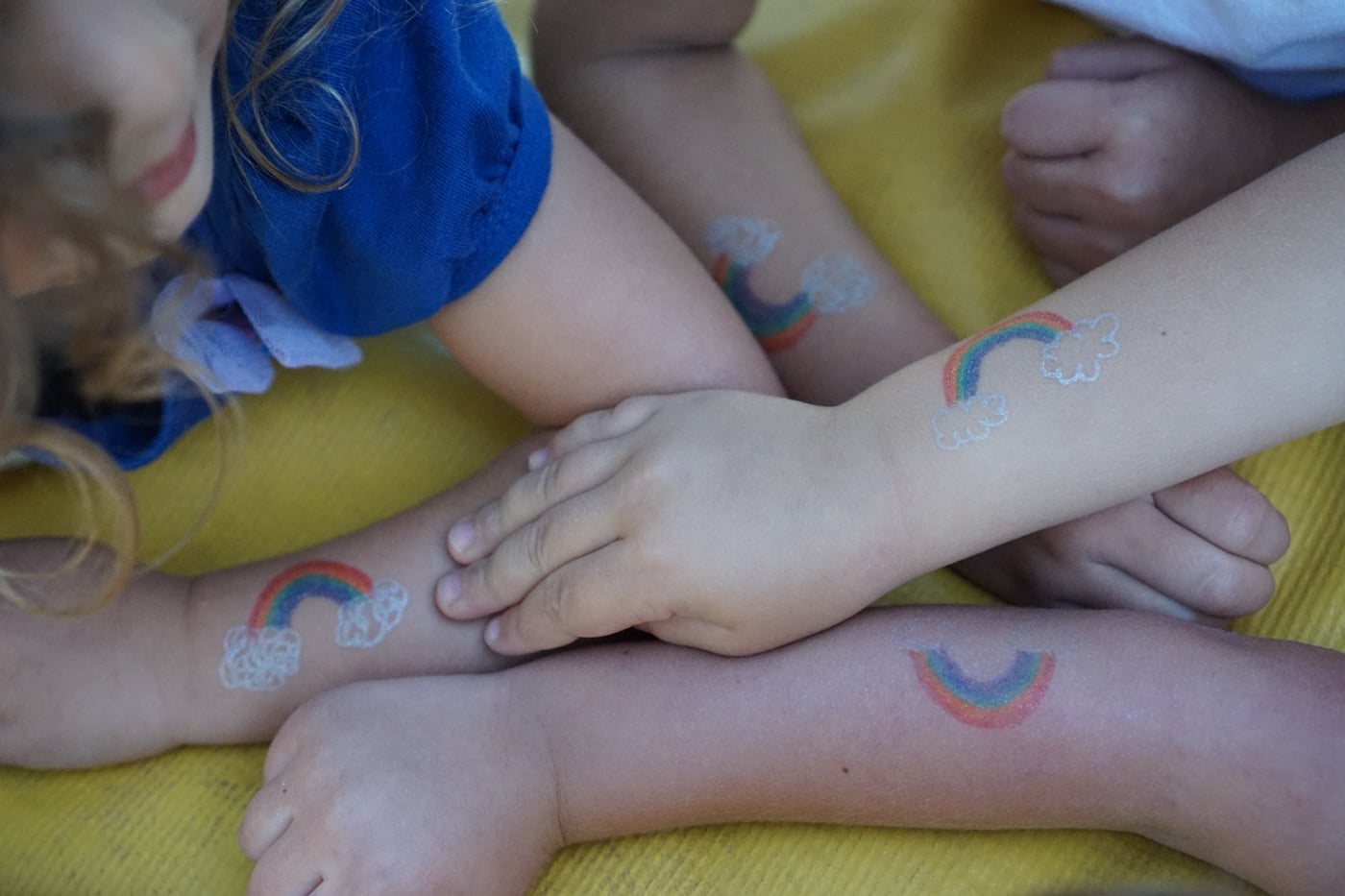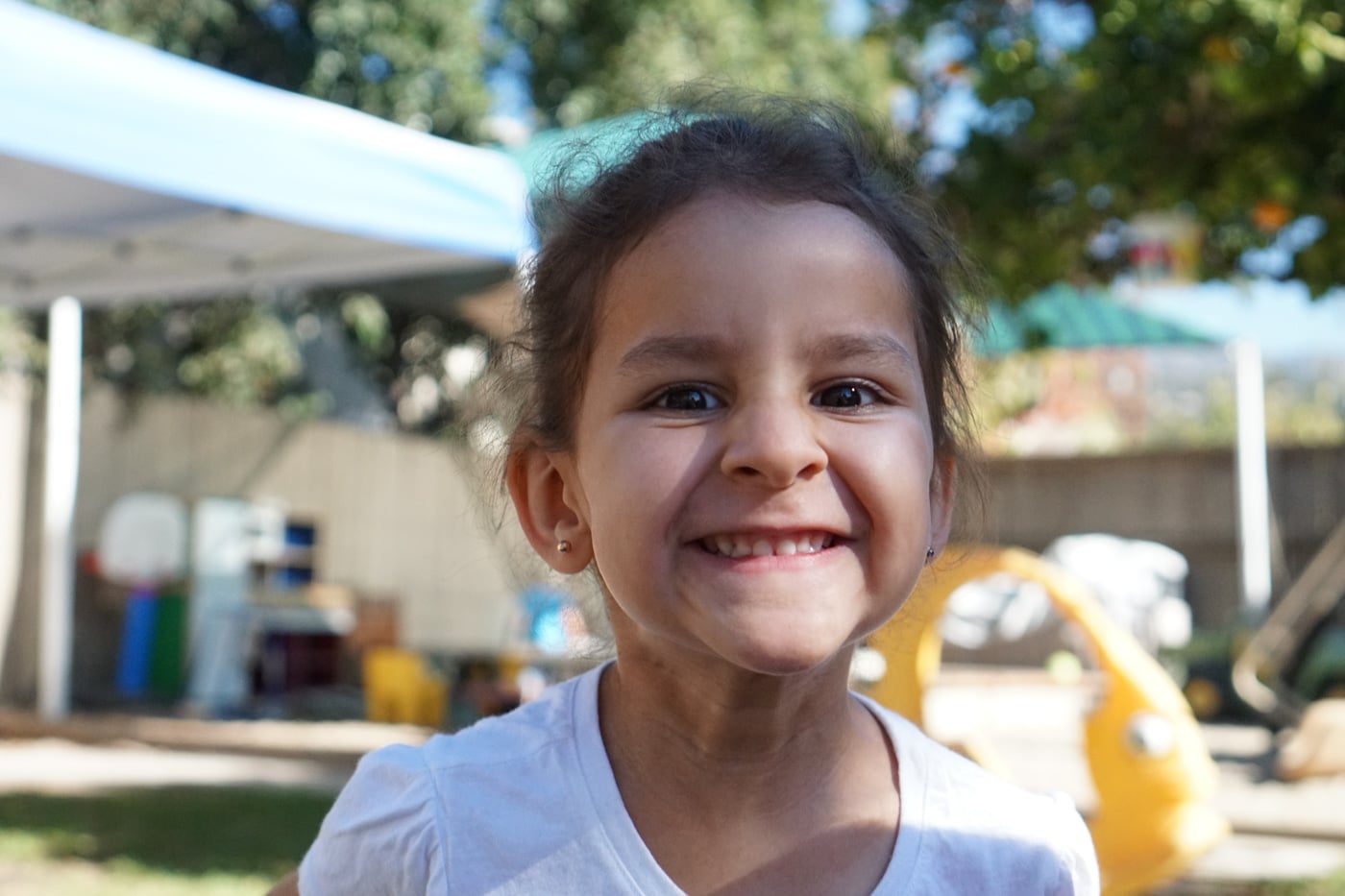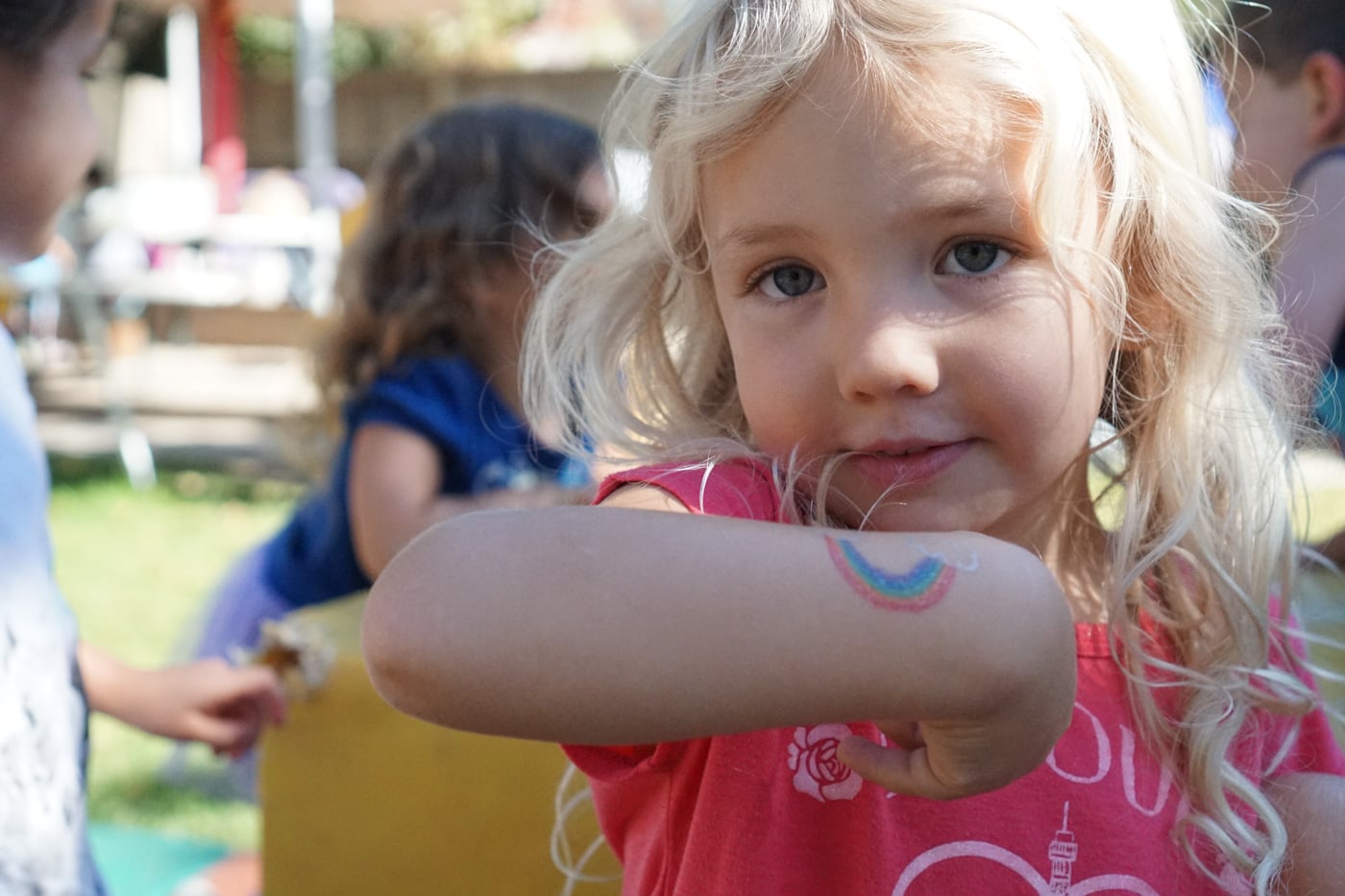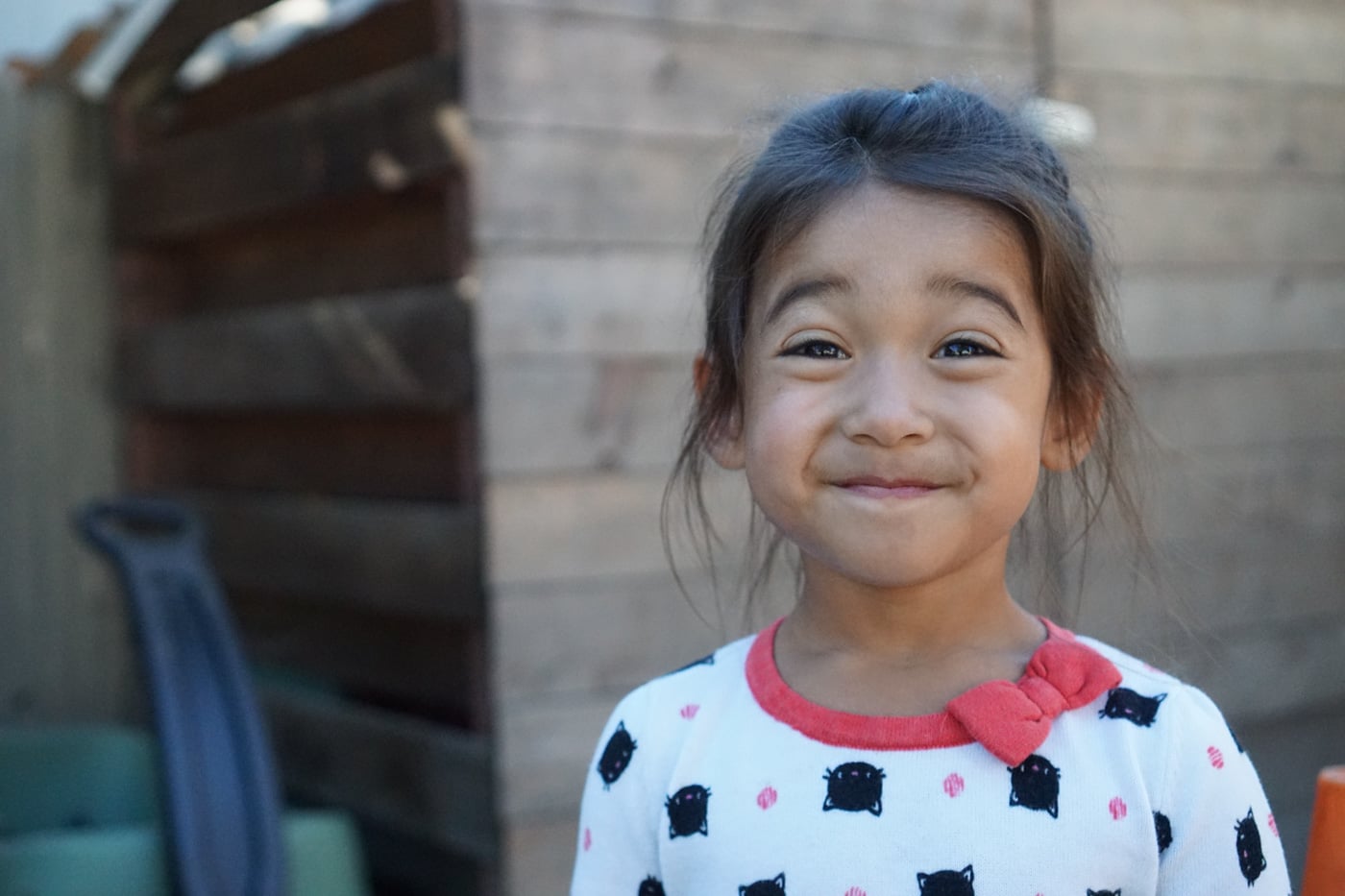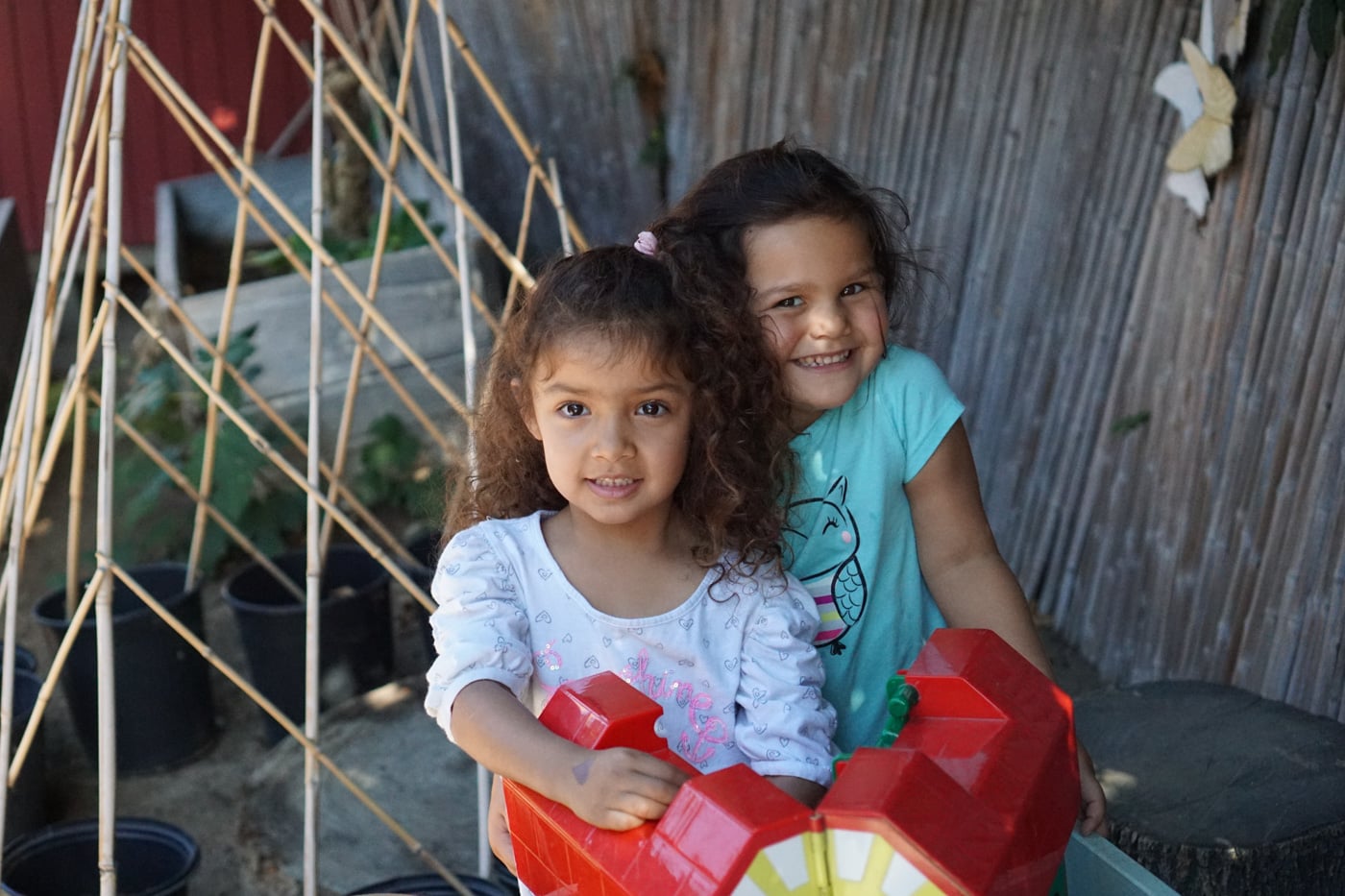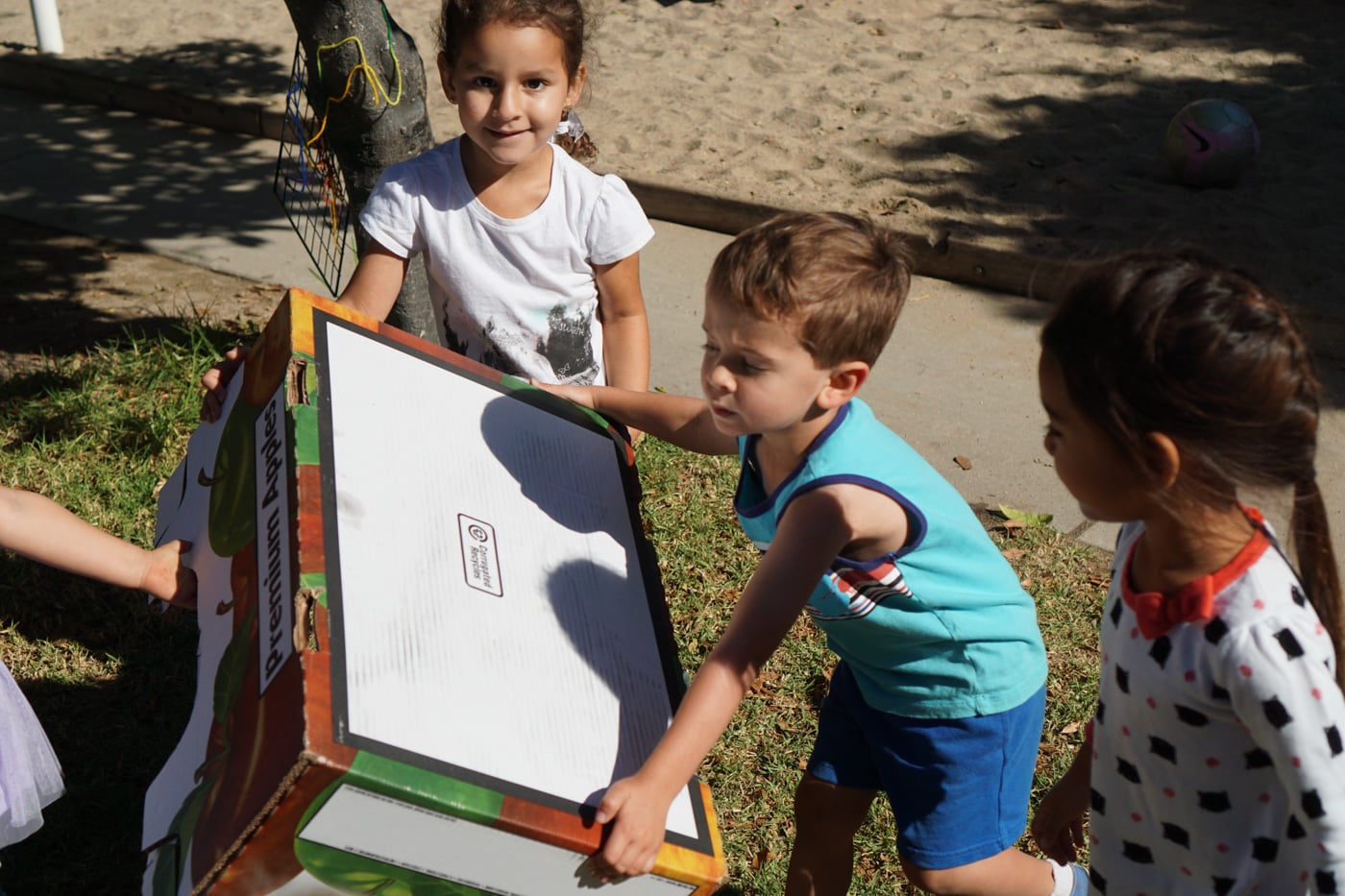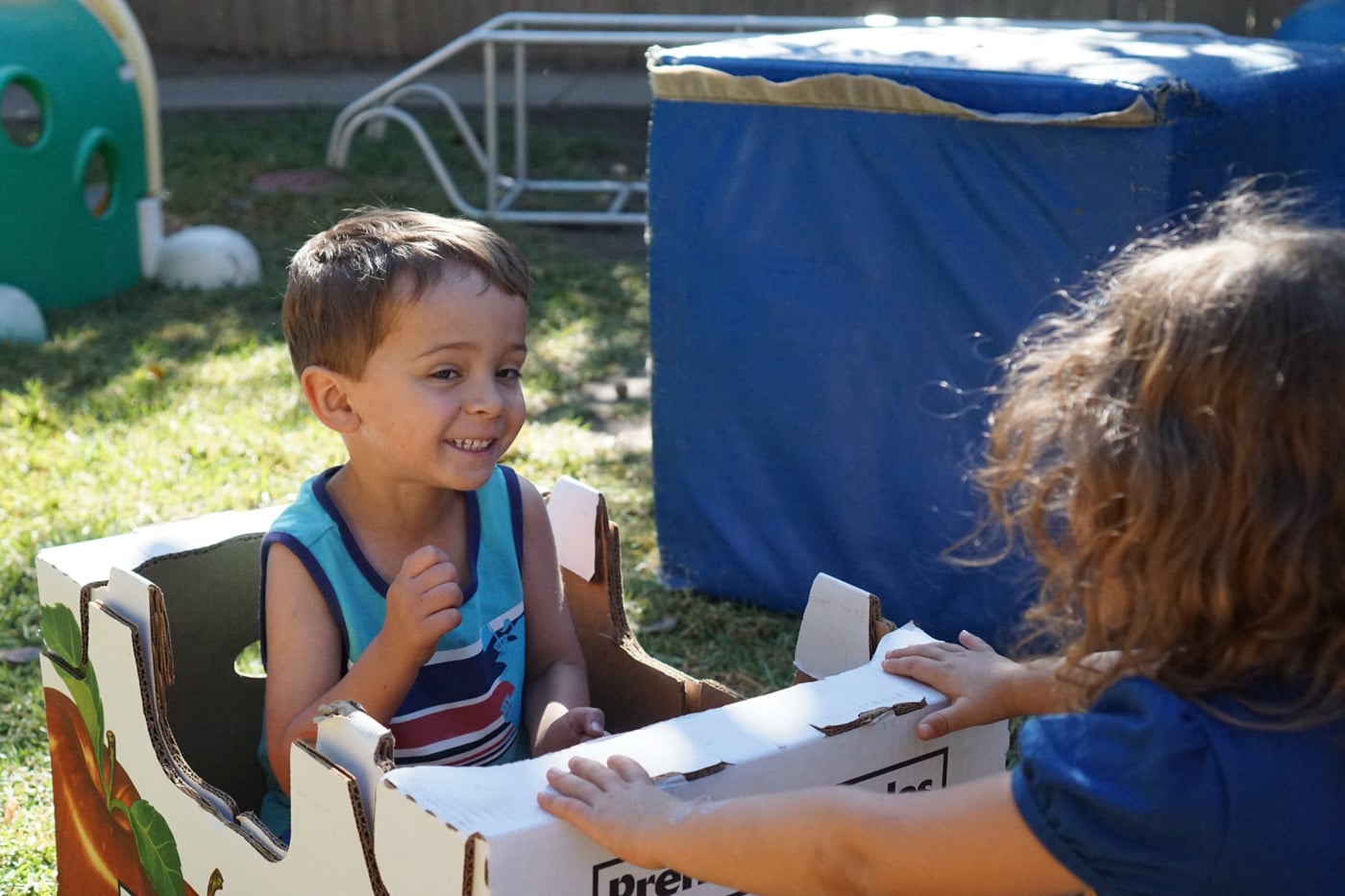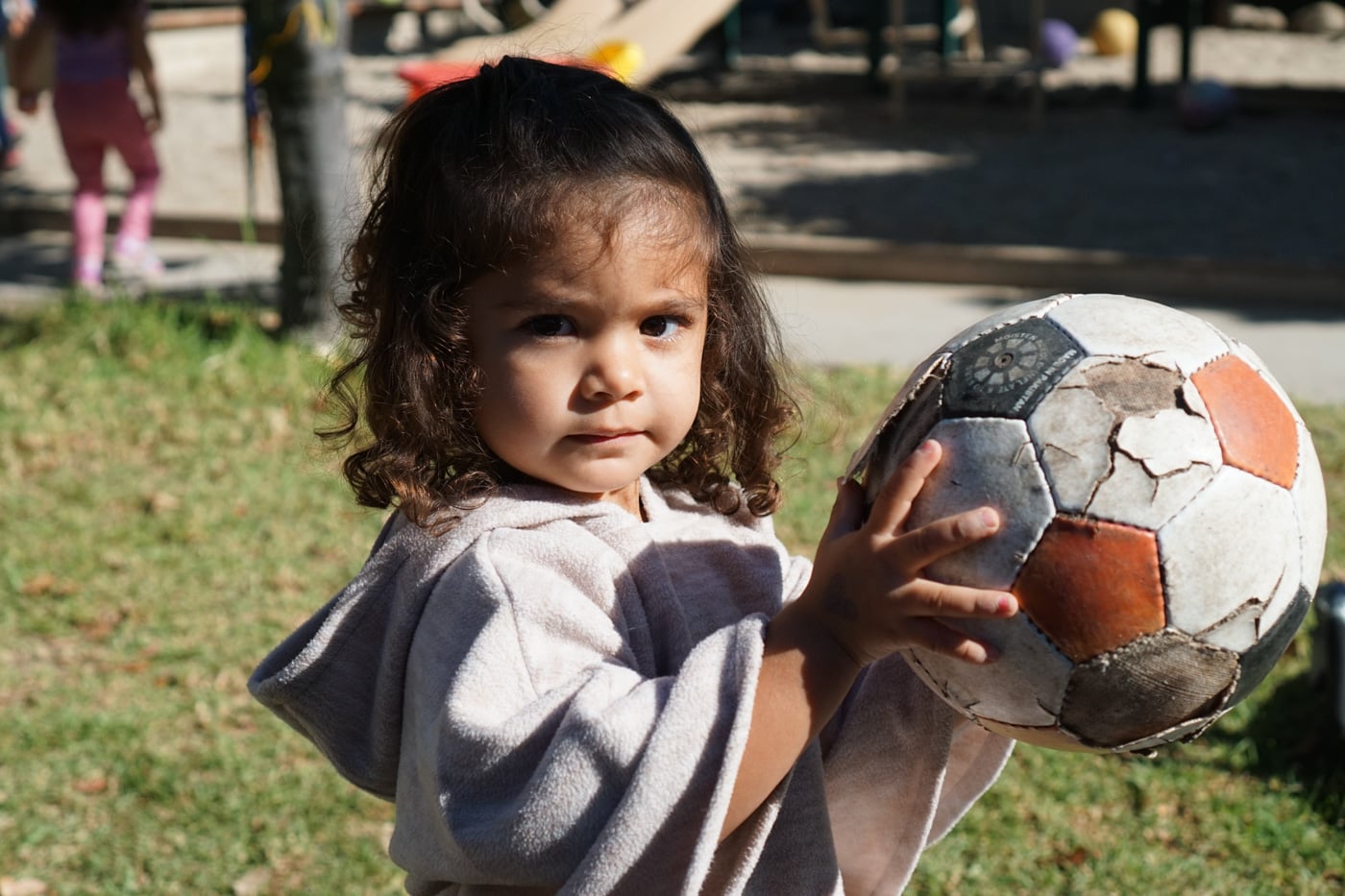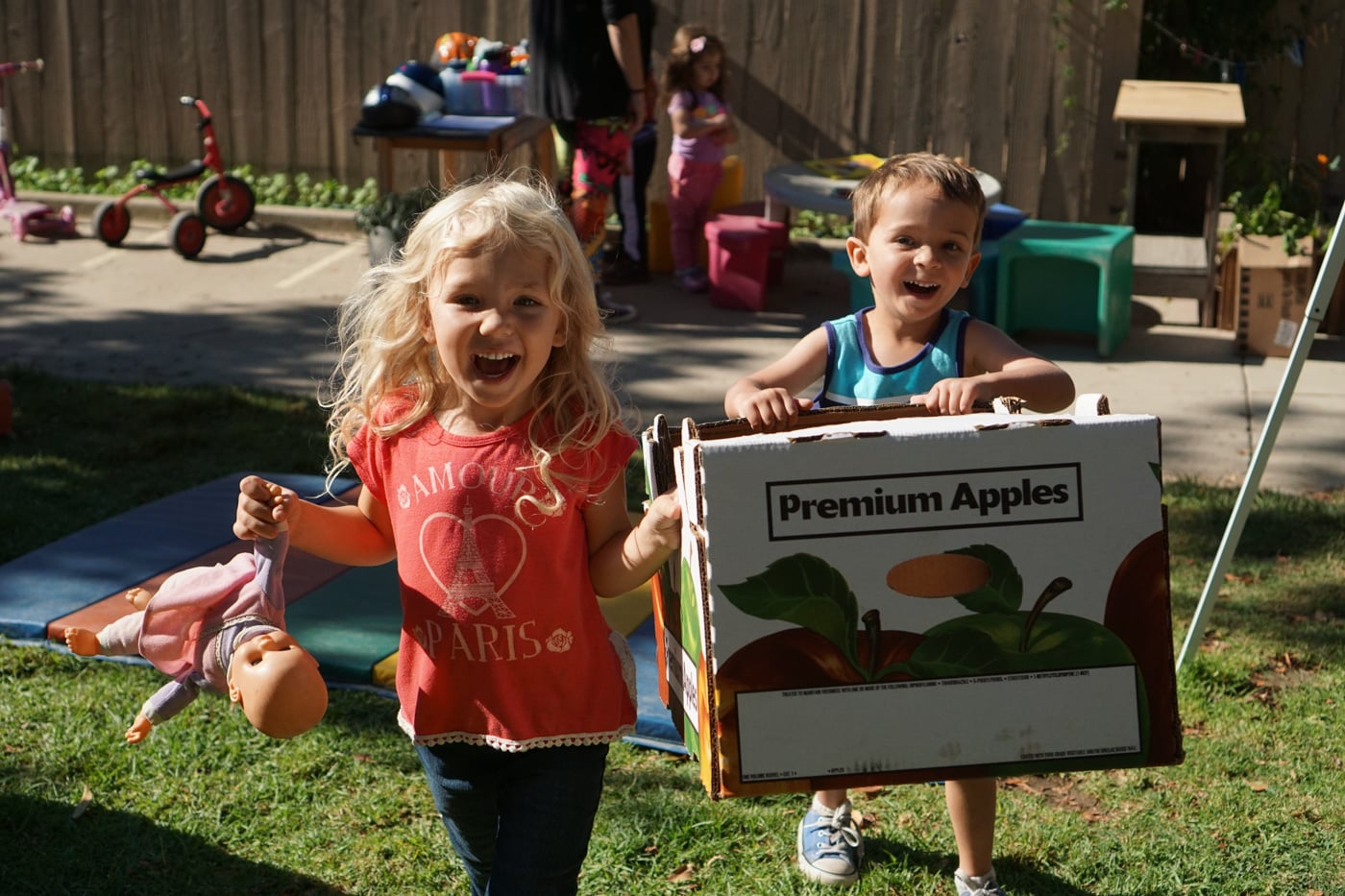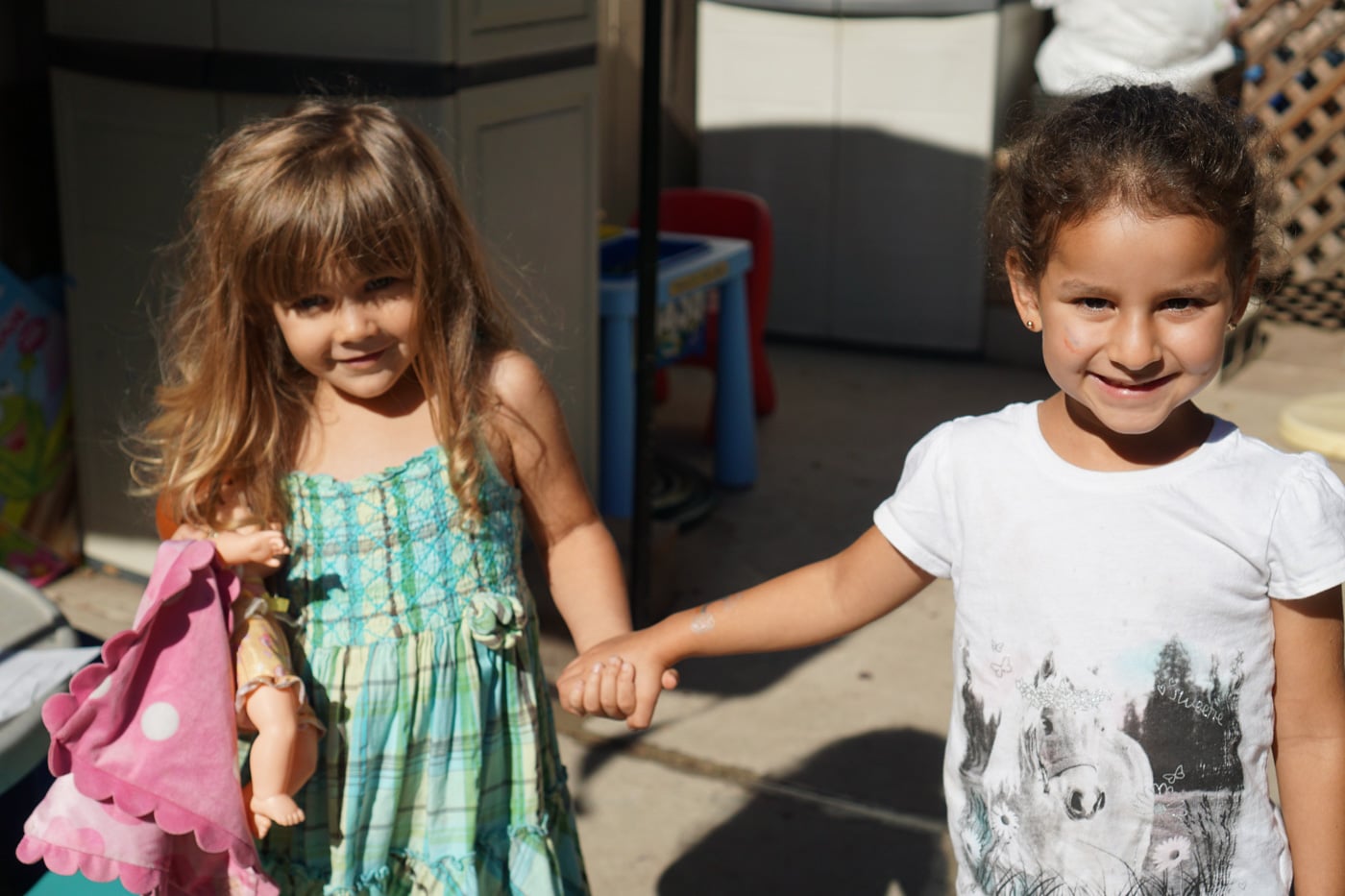Information for Parents
Our Curriculum
At Garden Preschool we emphasize learning through play in an environment that is carefully planned to encourage discovery, independence and social interaction. In order to develop self-esteem and social competence, children are encouraged to help themselves, help others, take initiative, and become increasingly independent. We are committed to practicing Developmentally Appropriate Practice (DAP) as defined by the National Association for the Education of Young Children (www.NAEYC.org). Garden Preschool is a Demonstration site for the Outdoor Classroom Project. The project’s goal is to increase the quantity and quality of outdoor experiences for all children. The children spend equal amounts of time inside and outside each day engaging in numerous garden and nature related actrivities. The Outdoor Classroom provides activities in all domains of learning including but not limited to art, maipulatives, dramatic play, music, science, gross and fine motor. In addition to the Outdoor Classroom, Garden Preschool also incororates the Creative Curriculum model into our program.
Our preschool program is designed to encourage a balance of child initiated and teacher facilitated activities. This program offers children a variety of choices provided within a carefully prepared indoor and outdoor environment. The environment includes art, dramatic play, unit blocks, manipulatives, language arts, books, music, water and sand play, building of large structures, gardening, running, climbing, animal care, and a variety of large and small motor activities.
Our goals include the encouragement of each child’s natural curiosity and interest in learning. We feel it is important for children to actively participate in the learning process, and therefore provide many opportunities for learning by doing, for both indirect and direct acquisition of new knowledge and skills.
Our environment has attractive and interesting materials provided in an organized and thoughtful fashion. Materials are included to address all the key areas of child development.
Our Learning Environment
Our classroom and outdoor area contain the following elements to meet the developmental needs of preschool age children:
Child sized furniture and equipment – to promote children’s comfort and ease of use.
Sensory materials – to facilitate the growth of tactile, auditory, visual and olfactory skills.
Fine motor materials – to promote the growth of hand muscles and hand-eye coordination.
Gross motor equipment – to help develop large muscle groups and body coordination.
Language/literary materials – to promote reading, listening, speaking and writing skills.
Social studies materials – to promote self-recognition and self esteem, awareness of family and community, social skills, dramatic play and nurturing behaviors.
Pre-mathematics materials – to expand knowledge of number, shape, time, sequence, and measurement.
Materials for creative expression – to develop creativity in art, music and drama and to appreciate the creativity of others.
A supply of materials is kept in storage and resources are rotated on a regular basis and as children’s interests dictate.
We plan curriculum around themes that evolve with the children’s interest. We anticipate areas of curiosity that the children are likely to pursue and prepare enrichment activities and other options. As we plan curriculum we take the following into consideration:
- The status of an individual’s growth and development based on observational assessment
- The general developmental level of each group of children
- The interests and abilities of individual children
- The materials, equipment and space available in the classroom
- Upcoming special events and their significance to children and their families
- The season and prevailing weather conditions
- The mood of the children on any given day
- The activity level of the children at certain times of the day
- Skills and special interests of staff members
- Special goals or concerns that parents may have for their child
- Skills children will need for later success in school.
We present a multicultural view and are committed to practicing anti-bias principals. This is reflected in our environment, materials, daily interactions and language and our curriculum. We are constantly alert for developmentally appropriate opportunities to embrace diversity and divergent thought.

